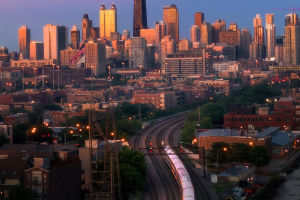Banghwa Bridge, stretching over 2.5 kilometers across the Han River, is a striking feature of Seoul’s landscape. Connecting Seoul’s Gangseo District with Goyang in Gyeonggi Province, it serves as a major transportation route to Incheon International Airport.
Its distinctive double-deck structure and bold orange color make it one of the most recognizable bridges in the city. The central section, shaped like an airplane in mid-takeoff, adds a symbolic flair, highlighting Korea’s connection to the world and its modern ambitions.
Blending Form and Function
What makes Banghwa Bridge stand out is its combination of functional design and aesthetic appeal. Its middle 540-meter arch truss section is not only practical, allowing vehicles to cross easily, but also visually appealing. The bridge's architecture offers scenic views of the Han River below, making it both a key piece of infrastructure and a beautiful landmark. You can enjoy a unique perspective of Seoul, especially at dusk, when the lights reflect off the river, turning the bridge into a glowing beacon.
Nighttime Views and Han River Parks
At night, Banghwa Bridge becomes a vibrant spectacle. The bridge is illuminated, casting a warm, glowing light on the Han River, creating an ideal spot for photography or a quiet, scenic stroll. Surrounding Han River parks, such as Yeouido Hangang Park and Mangwon Park, provide excellent vantage points to take in the bridge and the glittering city lights. These parks are perfect for relaxation, picnics, and cycling, offering both locals and tourists a chance to experience the tranquil side of Seoul.
A Cultural Icon
Beyond its architectural and functional importance, Banghwa Bridge has also become a cultural icon. Its picturesque views and modern aesthetic have made it a popular location for Korean drama shoots. Numerous dramas have featured the bridge, capturing its beauty against the backdrop of the river and skyline, further embedding it into the fabric of Korean pop culture.
Banghwa Bridge offers a mix of modern engineering, natural beauty, and cultural significance as it stands as a symbol of Seoul’s dynamic and evolving cityscape.


